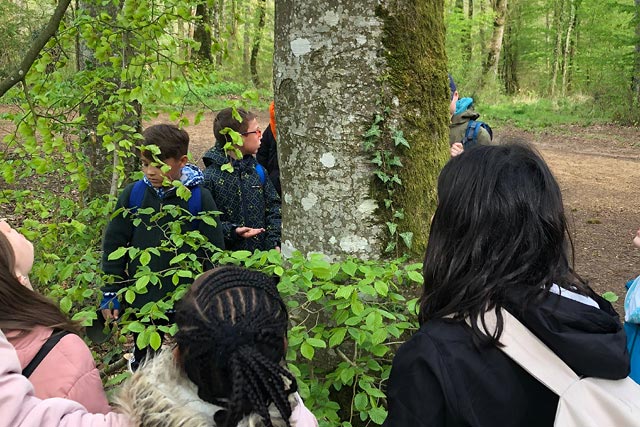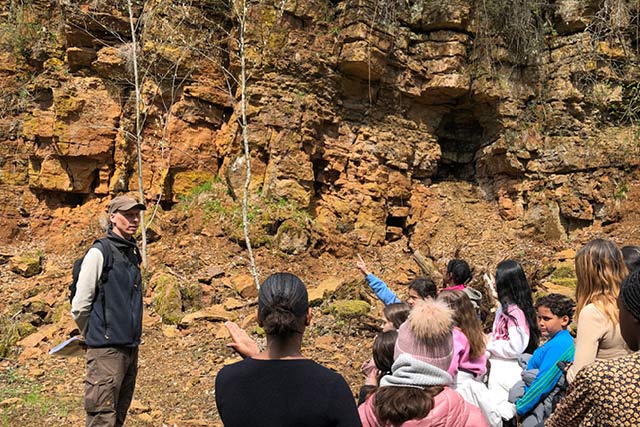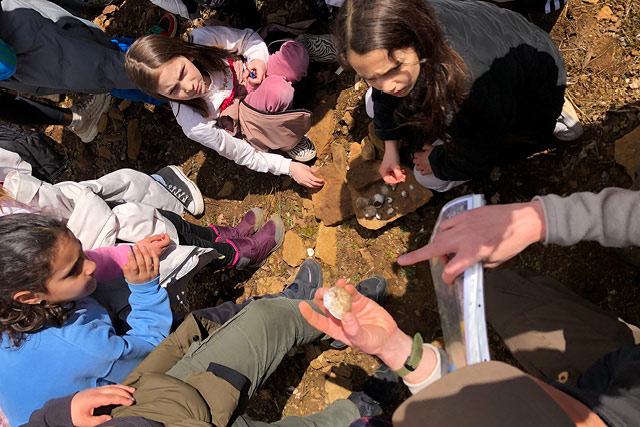A busy April in our environmental education programme
The Ellergronn spring forest
 |
 |
 |
© Minett UNESCO Biosphere / Lucie Majerus
The primary schools of the Minett municipalities went on a discovery tour of the Ellergronn spring forest. Accompanied by botanist Antoinette Welter, they discovered the awakening of nature, got to know early flowers, tasted young beech leaves, learned about the history of the formation of the Ellergronn ponds, found traces of various animals and learnt more about camouflage in nature in a playful way.
Not all dandelions are the same
 |
 |
 |
© Minett UNESCO Biosphere / Lucie Majerus
The secondary school classes helped Odile Weber, botanist at the ‘naturmusée‘, to prepare dandelions for the national herbarium. They learned to distinguish the characteristics of the different species and to list them. In the field, the groups then collected the different dandelion species according to scientific criteria, described them, noted their coordinates, photographed them and prepared them for pressing. The pupils were thus able to experience first-hand what the daily work of a botanist is like and actively participate in the fieldwork of a botanist.
The “Aire Terrestre Educative” in Rumelange
 |
 |
 |
© Minett UNESCO Biosphere / Lucie Majerus
The two classes from Rumelange who are participating in our pilot project “Aire Terrestre Educative” met Jan Herr. Jan Herr is in charge of protection measures in the Natura 2000 zones in southern Luxembourg. Together with the scientist, the children were able to discover a specific area of the arboretum: the old quarry face. This stone vestige, created by open-cast iron ore mining activities, was recently restored by the Administration de la Nature et des Forêts (ANF).
In order to preserve this special biotope, the brush and pioneer trees were removed from the site. The area around the quarry face provides a habitat for a multitude of animal and insect species between the partially detached hot stones. Lizards, butterflies and wild bees, to name but a few species, feel perfectly at home here. In early summer, wild orchids and other wild grasses can be seen in the adjacent dry grassland.
Although the area is protected, primary school children have found litter thrown in by people. Plastic bottles and other items that should not be left in the wilderness could be disposed of. By exploring the arboretum’s quarry face, the children learned why protected areas play an important role in preserving our ecosystems and why it is important for people to follow rules. At the end of the excursion, the children discussed again their brainstorming on possible activities in the arboretum and decided democratically on the next steps to be taken.



